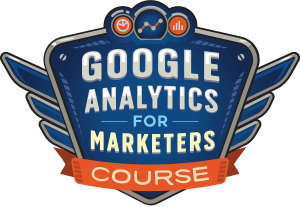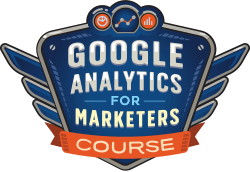How Much Should You Spend on Facebook Ads? Budgeting Steps
Trying to lock the budget for your Facebook ads? Need some ad spend wisdom?
In this article, you’ll learn how to budget your Facebook ad spend based on your revenue goal and how to distribute your budget across campaigns to meet that goal. You’ll also discover four mistakes to avoid.
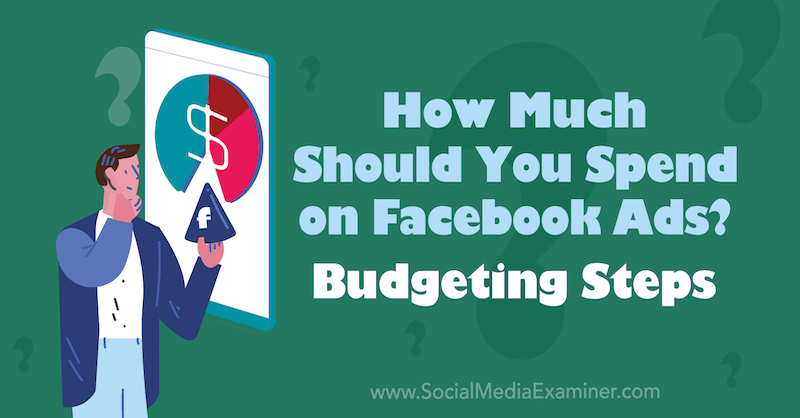
To learn how to choose the right Facebook advertising budget for your business, read the article below for an easy-to-follow walkthrough or watch this video:https://www.youtube.com/embed/s-sIW0Ev8bE?enablejsapi=1&origin=https%3A%2F%2Fwww.socialmediaexaminer.com
#1: Establish Your Facebook Advertising Budget
The first step to determining your Facebook advertising budget is to understand the numbers related to the marketing and sales of your business. For most of my clients, the goal is to make money, which means they’re focused on getting leads and making sales.
Typically, a marketing budget for any business is 5%–12% of revenue. Newer companies may want to spend closer to 12% because they want to grow aggressively. But let’s say your company has been around for a while and you’ve got great revenue coming in. If you want to maintain or grow incrementally, your budget might be closer to 5%.
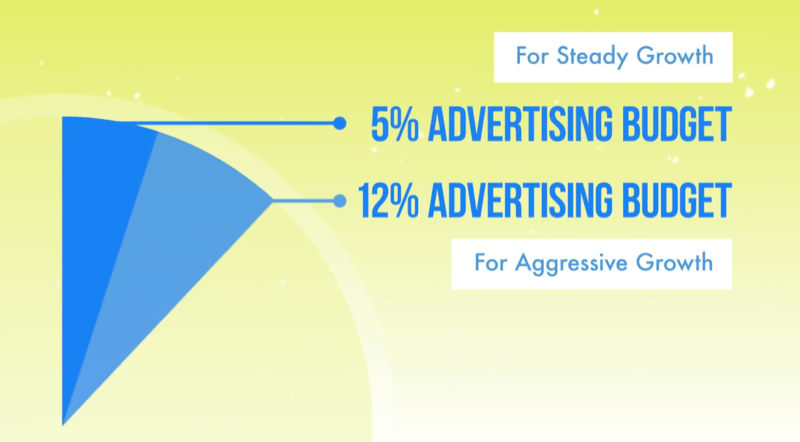
Another scenario might be that your business is brand-new or you’ve never spent money on marketing; you’ve only focused on word of mouth and referrals. In that case, you need to seek out some additional information.
The first place you can find this information is through industry research. There’s a lot of information available online and from industry organizations regarding the numbers I’ll be sharing with you. You can also reach out to people in your field to find out what they’re doing to get a good idea of the direction you should go.
Now let’s talk about those important numbers you need to find.
Learn How to Measure All Your Marketing With Certainty. Become a Better Marketer!MASTER ANALYTICSSALE ENDS WEDNESDAY!LEARN MORE
Cost per lead: First, what’s an appropriate cost per lead for your business? A lead isn’t a sale but it is what you need to get before you make a sale.
Cost per core event: The most important number to focus on is your cost per core event. For instance, if you’re a business that needs a conversation before a sale can be made, put a number on what you can profitably afford to spend for that key event.
When you start advertising on Facebook, you’re going to find that the lowest cost per lead ad campaigns may not produce the lowest cost per core event. If you sell a low-dollar product or service, you have to figure out the maximum amount you can spend to remain profitable. If you’re selling a high-dollar item, it’s very similar but you have a little more wiggle room as long as your conversion rates are good.
Cost per customer acquisition: You’ll also need to determine what a strong cost per customer acquisition is for your business. How much money did you have to spend to acquire this new customer? Again, this number varies by business. If you have various products and services, your cost per customer acquisition may differ for those different products and services.
Conversion rate: Look at your conversion rates as well. Whether you have a sales team or are selling something directly online, determine how many leads you need to get on the phone or get to an appointment to make that sale.
I get a lot of questions about what the magic number is in terms of ad spend, but ultimately, it’s heavily dependent on your expectations and goals. If your business is new and you want to grow to $100,000 in the next few months, that’s a clear goal. Using past industry data, you can reverse-engineer that goal to determine how many leads you’ll need, what that cost per core event will be, and how much you can spend to acquire one customer.
#2: Distribute Your Facebook Ad Spend
Once you’ve decided what your monthly ad spend is, the next step is to properly distribute it based on the types of Facebook ads you’ll need to run to see results. Let’s break that down into three categories.
About 20% of your Facebook ad spend should be dedicated to education, engagement, and audience-building. Far too often, business owners will either produce nothing but lead generation-focused ads or content-focused ads. Ultimately, you need both to succeed. You want that 20% to create an audience you’ll be able to leverage long-term so your results don’t dry up or skyrocket in terms of costs.
Put Google Analytics to Work for Your Business
Ever thought, “there’s got to be a better way” when it comes to tracking your marketing activities? Are you forced to make decisions based on limited data? With the right training, you can use Google Analytics to measure all of your marketing efforts with certainty. You’ll stop the leaks in your ad spending, justify your marketing spend, gain the confidence you need to make better marketing decisions, and know what’s working at every step of the customer journey. Let the world’s leading analytics pro show you the way. Check out our new Google Analytics for Marketers course from your friends at Social Media Examiner. 00Days16Hours11Minutes16SecondsLEARN MORE – SALE ENDS NOVEMBER 25TH!
About 60% of your budget should focus directly on promoting your offer and generating those conversions.
The remaining 20% you want to dedicate to your retargeting efforts. Retargeting is an effective way to get a lot of bang for your buck, but ultimately, if that’s all you do, your audience will be so small that you won’t see those financial results.
All three pieces of this puzzle need to work together to maximize the impact of your Facebook ad budget.
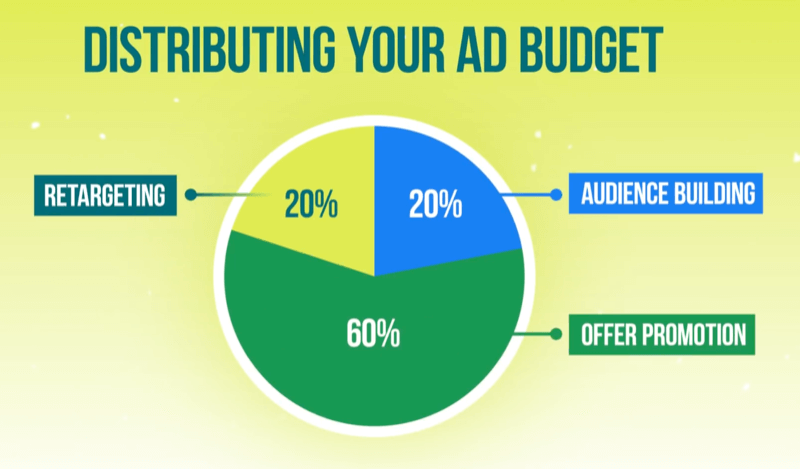
Bonus: 4 Facebook Advertising Campaign Mistakes to Avoid
Now let’s look at some of the biggest mistakes that local or online business owners make when it comes to their Facebook advertising campaigns. Avoiding these mistakes will help you profitably spend on Facebook and Instagram ads.
Giving It Too Little Time
Number one is not giving your ad campaign enough time. Time is crucial to get that initial data, analyze what the data is telling you, and then make the appropriate adjustments from there. You also want to go back and revisit that customer buying cycle and the length of time it historically takes for someone to go from an initial lead to a sale.
If you’re in a business that has a very short buying cycle, that’s great. You’re going to be able to track that data a lot faster and adjust your budget based on what you’re seeing. If it might take 6 months for the average customer to close, you at least need to give it 6 months so you can really see the return on ad spend.
Not Spending Enough
The next big mistake with Facebook ads is not spending enough. You need to understand that the size of your audience and the cost of your product ultimately dictate what you can expect to see in terms of those costs per lead.
If you don’t spend enough money per month, Facebook will ultimately distribute that budget in such a thin way that you may not even be able to generate a single lead per day. However, if you had just bumped up the budget, you would potentially see amazing results.
Choosing the Wrong Campaign Type
Another Facebook ad mistake I see businesses make is choosing the wrong types of campaigns and objectives.
Earlier, I mentioned three different types of ads that you should be using in your strategy. Ultimately, the objectives do correlate to those, but if you’re really looking for leads, don’t focus on a brand awareness objective or reach necessarily. You need to make sure that you’re telling Facebook exactly what you want to see so they can help you achieve those goals.
Not Reading the Data Correctly
The last big Facebook ad mistake is not understanding how to read the data in Ads Manager. The good news is that you can rearrange and organize the columns you see in your reporting. To do this, select the Customize Columns option in Ads Manager.
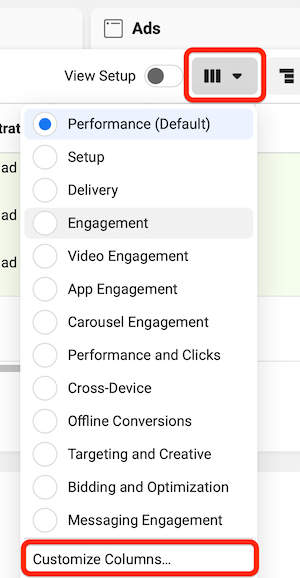
From here, you can add or remove pieces of data so your reports only show the critically important information you need to make those decisions. Then you can see clearly which campaigns are producing leads, scheduled calls, and scheduled appointments and which aren’t.
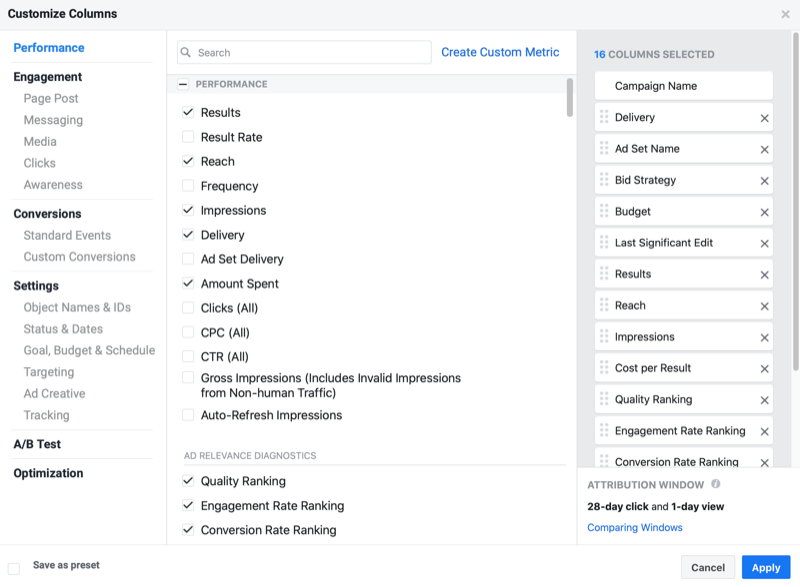
Conclusion
Following the steps above will help you determine the right Facebook advertising budget for your business. It’s important to understand your numbers and goals, industry data, and your own personal business conversion data. Then determine how you want to distribute that budget among ads for building your audience, promoting your offer, and retargeting.
Shared from original article posted by Allie Bloyd on Social Media Examiner https://www.socialmediaexaminer.com/how-much-should-you-spend-on-facebook-ads-budgeting-steps/

